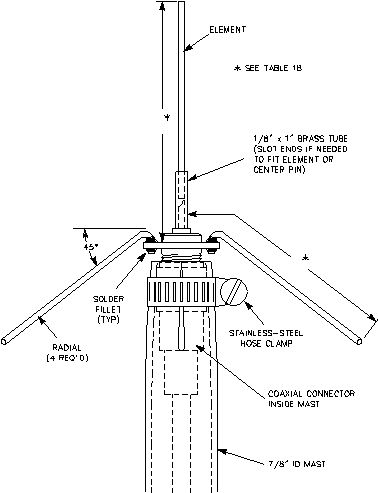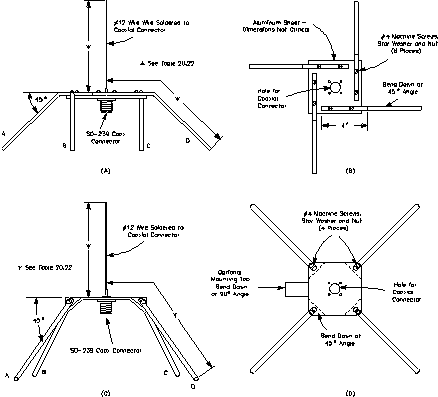
Fig 1.00—A simple groundplane antenna for the 144, 222 and 440-MHz bands. The feed line and connector are inside the mast, and a hose clamp squeezes the slotted mast end to tightly grip the plug body.
Easy to Homebrew 1/4-l Ground Planes
The ground-plane antenna in Fig 1.00 uses female chassis-mount connectors to support the element and four radials. If you have chosen large-diameter wire or tubing for the radials refer to Fig 1.02. Cut a metal sheet as shown (size is not critical, and the mounting tab is optional). Drill the sheet to accept the coaxial connector on hand (usually 11/16 inch) and the 4-40 hardware for the radials and connector. Bend the plate or radials as shown with the aid of a bench vise. Mount the coaxial connector and radials to the plate.
Small diameter (1/16-inch) radials may be attached directly to the mounting lugs of the coaxial connector with 4-40 hardware. To install 3/32- or 1/8-inch radials, bend a hook at one end of each radial for insertion through the connector lug. (You may need to enlarge the lug holes slightly for 1/8-inch rod.) Solder the radials (and hardware, if used) to the connector using a large soldering iron or propane torch.
Solder the element to the center pin of the connector. If the element does not fit inside the solder cup, use a short section of brass tubing as a coupler (a slotted 1/8-inch-ID tube will fit over an SO-239 or N-receptacle center pin).
Once the antenna is mounted and tested, thoroughly seal the open side of the coaxial connector with RTV sealant, and weatherproof the connections with rust-preventative paint.
